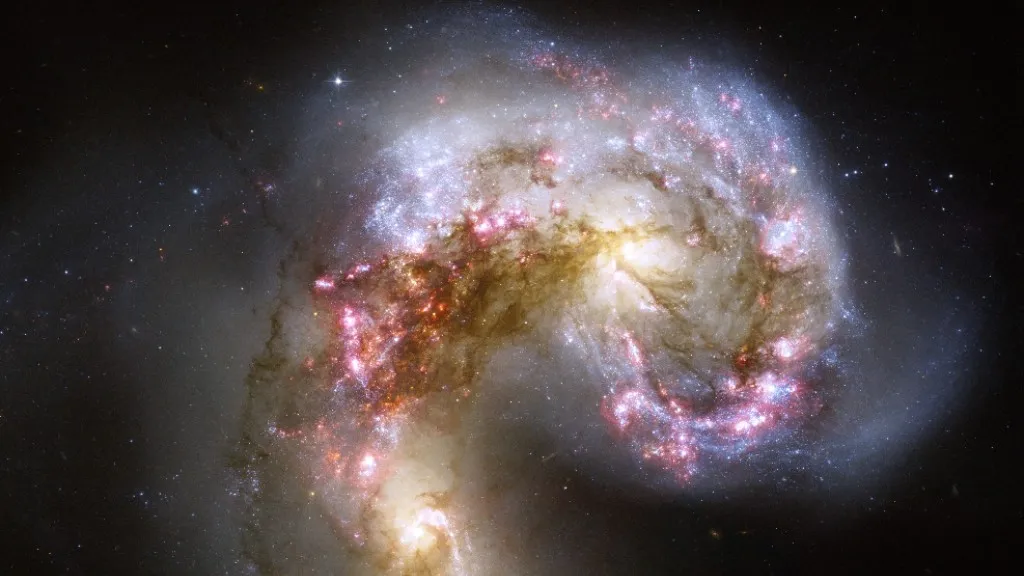Missing Half of the Law
The Second Law is true for simple thermodynamic systems — gases in boxes, steam engines, chemical reactions. In these environments, energy tends to spread out, equilibrate, and become less useful. But gravity changes everything.Imagine a vast, uniform cloud of gas in space. In the traditional view, this is a high-entropy state—maximum disorder. But gravity pulls this cloud together. It concentrates energy, reduces the local disorder, and eventually forms a galaxy. A galaxy is a highly ordered, low-entropy structure compared to the gas cloud it came from.
Gravity is fundamentally an organizing force. It is the universe's "Drive for Order". This stands in direct opposition to the standard thermodynamic entropy.

Fig. 1: This image shows two galaxies, NGC4038 and NGC4039, in the process of merging. (Image credit: NASA, ESA, and the Hubble Heritage Team (STScI/AURA)-ESA/Hubble Collaboration.)
Law of Entropy Equilibrium
Based on Time-Energy Equivalence Principle, universe is made of a thermodynamic fluid of time. So it must obey the First Law of Thermodynamics: that energy is conserved and cannot be created or destroyed, only transformed between heat and work. If the total energy is constant, then the heat generated must exactly equal the work done. This simple balance suggests a deeper principle governing entropy.
To satisfy the Law of Conservation of Energy, the universe must obey dynamic equilibrium between two opposing forces:
The Drive for Chaos: This is the standard thermodynamic entropy—heat, radiation, and the dissipation of energy. It is relates to the Timeflow field's "kinetic" energy, represented by its microscopic frequency (ω).
The Drive for Order: This is the measure of structural information and organization, driven by gravity and represents the "work" the universe performs to create complexity. It’s relates to the field's "potential" energy, stored in structure and represented by its microscopic amplitude (A).
The traditional Second Law only accounts for the first drive. The "Law of Entropy Equilibrium" states that the two drives are perfectly balanced at all times. Heat (disorder) and gravity (order) act like two ends of a seesaw. When one rises, the other falls — and their sum remains balanced. The total entropy of the universe remains constant.
So, Is Entropy Always Increasing?
The universe is not winding down, it’s evolving.
For every act of order, there’s an equal and opposite act of disorder. For every star that forms, there is radiation that escapes. For every reproducing cell, there is energy dissipated as heat.
But together, these flows create balance — and from that balance emerges the unfolding story of complexity, life, and evolution.So, is entropy always increasing? Yes — the entropy of chaos keeps rising, but only because structure and order are increasing right along with it, maintaining the equilibrium.